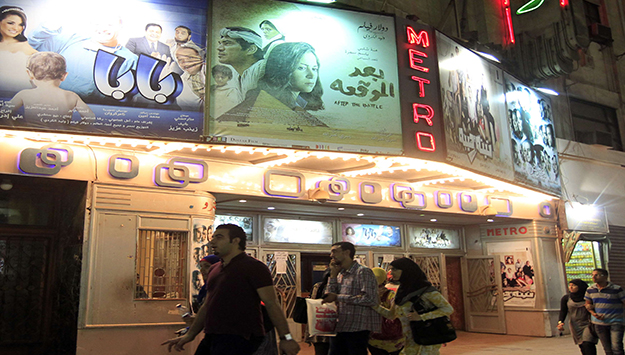
Digital innovation, cultural storytelling, and rising worldwide awareness have driven notable expansion in Africa’s film sector in recent years. From Nigeria’s thriving Nollywood to newly developed movie hotspots, the continent boasts a rich and varied cinematic scene. Ranked depending on production volume, revenue, cultural impact, and global influence, the top 10 biggest film industries in Africa in 2025 is thoroughly explored below.
List Of Top 10 Biggest Film Industries In Africa 2025
1. Nigeria

With almost 2,500–2,600 films released yearly, Nollywood is still the unquestionable powerhouse of African film, ranking second only in output worldwide behind only India’s Bollywood. At more than $6.4 billion in 2022, Nollywood is expected to reach $14.82 billion by 2025. Renowned for its low-budget films and fast production cycles, Nollywood shines in capturing relevant family, love, and social issues narrative. Movies like Everybody Loves Jenifa and A Tribe Called Judah have exceeded box office records; the former grossed over 1.46 billion Naira in 2024. With over a million employees and controlling English-speaking Africa’s box office with a 96.5% share in 2023, Nollywood’s worldwide reach has grown via streaming platforms like Netflix and
2. Ghana

With an estimated income of $1.1 million, Ghana’s film sector Ghallywood generates between 200 and 600 films yearly. Often working with Nollywood to produce excellent films, Ghallywood is praised for its vivid portrayal of Ghanaian culture and customs. Its increasing popularity is shown by its presence on streaming platforms and at international film events. Ghallywood is a major player in West African film even though its history is complicated and stems from colonial-era filmmaking. Its independent filmmakers have spurred a rebirth.
3. Kenya

With almost 500 films produced annually, Kenya’s Riverwood generates between $4.7–$6.4 million in income. Renowned for tackling social concerns including HIV/AIDS, poverty, and corruption, Riverwood uses limited resources to mix imagination with simplicity. East Africa finds great resonance in its movies, and local streaming channels and more investment are driving the business forward. Movies like Supa Modo, which highlight Kenya’s rising impact in African film, have won praise elsewhere.
4. Tanzania

With an estimated income of $0.7–$0.8 million, Tanzania’s Swahiliwood also generates almost 500 films yearly. Emphasizing Swahili-language films that showcase Tanzania’s rich culture and customs, the sector has seen a rebirth. With growing attention at events like the Zanzibar International Film Festival, Swahiliwood’s gripping stories have attracted a devoted following in East and Northern Africa. The growth of the sector shows increasing demand for real East African narratives
5. Uganda

About 200 films are produced annually by Ugawood, which also estimates $0.5 million in income. Though on a smaller scale, Uganda’s industry is well-known for creative and low-budget films like The Girl in the Yellow Jumper and Who Killed Captain Alex, which have cult followings all around. Ugawood’s emphasis on social concerns and artistic narrative has helped it to become a rising star in East African film.
6. Tunisia

Due to its extensive history, cultural depth, and expanding global presence, Tunisia’s film industry holds a significant place in African and Arab cinema. This is despite the fact that it is smaller in comparison to other giants in the film industry, such as Nigeria’s Nollywood or South Africa’s cinematic hub. In the year 2025, the film industry in Tunisia continues to flourish as a creative force, blending influences from the Mediterranean and Africa with a concentration on telling stories that are politically and socially relevant.
7. Ethiopia

Ethiopia’s film business generates almost 140 movies a year and brings in about $0.9 million. Ethiopian films appeal all around East Africa, well-known for highlighting the rich legacy and culture of the nation. Digital platforms have helped the business flourish by allowing directors to reach more people. Though less than that of Nigeria or Kenya, Ethiopia’s film production adds much to the cultural portrayal of the country.
8. Zambia

With about 105 films released annually, Zambia’s film sector brings in roughly $0.5 million in income. Through movies like I Am Not a Witch, which debuted at Cannes, Zambian filmmakers address problems including gender-based violence and corruption and get recognition. With a $100 million investment plan among other recent government projects meant to modernize infrastructure and create a National Film Fund, Zambia’s ambition to compete in African film is evident.
9. Liberia

The Liberian film industry, which is frequently referred to as “Lollywood,” is a rising force in the African film industry. It is distinguished by its tenacity, its ability to tell stories that are culturally significant, and its growing aim. In 2025, the industry is experiencing a revival, which is being driven by local talent, international collaborations, and strategic initiatives to promote sustainable growth. This is in spite of historical challenges such as civil wars and the outbreak of Ebola.
10. Egypt

Although Egypt’s film business is among the oldest in Africa, it generates between thirty and sixty films a year but is still a big actor because of its cultural influence and historical importance. Often winning awards at esteemed events like the Carthage Film Festival, Egyptian film has a legacy of creating powerful movies that appeal not only throughout the Arab world but also outside. Despite a smaller output than Nollywood or Riverwood, its visually spectacular productions and emphasis on social issues help to explain its ongoing impact.






eelwiz